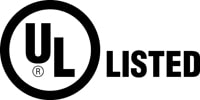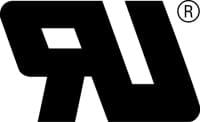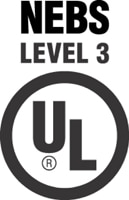A well-defined and structured certification program is vital to assuring product quality and safety
Randy Ivans, Underwriters Laboratories Inc.
Melville, NY
The Merriam-Webster® Dictionary defines “certify” as “to attest authoritatively, to confirm, to present in a formal communication, or to attest as being true.” Consider the implications of these words and phrases—confirm, attest, true, or meeting a standard. These are serious statements.
These terms are typically used by laboratories when they refer to data they are providing as a result of a test program. As a customer, you would certainly want that data to be based on actual and competent testing (“true”); and you would also want it to be accurate (“as represented”). So a reputable laboratory can easily certify test results, especially if that laboratory itself ran the test. Certifying someone else’s test results is also possible, although this should necessarily imply some level of confidence, oversight, and control by the certifying laboratory over the lab that actually performed the testing. It is even easier to simply “present a formal communication” about the work a laboratory has done and still to refer to it as some sort of certification.
Further consideration of such assertions only adds to the confusion. Consider a proclamation that something meets a standard. Does it mean that the test results, which are known to be true and accurate and the result of carefully conducted procedures, are in compliance with the requirements? There are such things as accurate but unacceptable results. Or is there somehow some judgment that the product itself complies? Is it just that one product that was tested, or are all of the products of the same make and model number assessed? To be sure, the foregoing statements represent very different takes on product testing, yet when was the last time someone sat you down and explained exactly what he means when using a term such as “NEBS certified”?
Where does this muddle of confusing terms leave the poor manufacturer who is trying to be diligent and to use the proper terminology in his marketing literature? Who’s to enlighten the product customer who is trying to determine exactly what “certified” means when the use of the term has the consistency of quicksand? At least part of the solution lies in differentiating between the casual use of the term “certified” and a structured certification system that “confirms” something (such as test results) or a formal certification program that results in a “certified” product.
ISO/IEC 17000, Conformity assessment – Vocabulary and general principles, defines “certification” as “third-party attestation (5.2) related to products, processes, systems or persons.”
More specifically, the attestation is that a complete and appropriate demonstration of fulfillment of specified requirements has been completed. This is the international definition associated with certification and is used throughout the world in the context of a formal certification program that complies with the international ISO/IEC Guide 65, General Requirements for Bodies Operating Product Certification Systems.
This definition makes it obvious that “certification” can cover quite a wide variety of situations. Most people are familiar with certification programs that result in a certification mark being placed on a product as an indication that the product is indeed certified. However, not all marks, even some very well known ones, are the result of complying with a formal “Guide 65” certification program. For example, the well-known CE mark is a mandatory European marking for certain products. The use of the CE mark requires compliance with various health and safety requirements established by a number of European Directives as ascertained by documented methods. However, the process permits self-certification using a manufacturer’s declaration of conformity. Without the rigorous controls and third-party independence required by Guide 65, self-certification would not be considered a true certification program under its rules.
It is equally true that there are programs that do not necessarily result in the authorization to use a mark at all. Various testing and laboratory programs are designed to offer a high level of confidence in the data produced through rigorous requirements, audits, and controls. These programs are intended to insure the reliability of the testers rather than the products themselves. They typically rely on an attestation from the participating laboratory or originating organization, which can be a letter or a certificate, as proof of compliance of the data with the program’s criteria. A good example of a program that falls into this category and also exemplifies the idea of “confirming” something is the Certification Bodies’ Scheme or “CB Scheme”.
The CB Scheme is essentially an agreement among certification organizations located within countries participating in the program. Such an organization is known as a National Certification Body (NCB) and is a certification organization that grants nationally recognized conformity certificates or that authorizes the use of their own certification marks to suppliers of electrical products. No marks are issued directly under the CB Scheme itself, just recognition of the competence to attest to qualification for those marks.
Specifically, after a product is tested by a laboratory recognized in the CB Scheme to conduct testing and to issue CB Test Reports (known as a CB Testing Laboratory or “ CBTL”), a CB Test Certificate is issued by the National Certification Body. This document is an NCB’s attestation that product samples have successfully passed the applicable test conditions and are in compliance with the requirements of the relevant Standard(s). Together with a detailed test report, it is used to inform other NCBs of a product’s compliance. A manufacturer can then use the CB test certificate to obtain the certification marks of other NCBs.
To be accepted under the program, a certification body must meet rigorous requirements with regard to both its technical competence and its internal quality system. An assessment against ISO/IEC Guide 65 is required, and knowledge of the IECEE Rules of Procedure is mandatory. According to the IEC / IECEE publication “About the CB Scheme”—
“An NCB that wishes to become a member of the CB Scheme for specified Standards, or would like to extend its scope to include additional Standards, is required to submit an Application through its national member body in IECEE. The IECEE Secretary reviews all such Applications, appoints Assessment Teams, and organizes on-site assessments of the NCBs to verify compliance against ISO/IEC Guide 65 and the IECEE Rules of Procedure and Operational Documents. The IECEE Peer Assessments also ensure that each member NCB has the technical capability, competence, and experience to carry out the required tests against IEC Standards and produce Test Reports acceptable to all other NCBs.
Assessment Teams comprise experts from participating NCB and CBTLs. Their Assessment Reports are made available to all CMC members for comments and yet studied in detail by the CMC Assessment Advisory Group, a standing committee of experienced IECEE experts. The Assessment Advisory Group’s objective is a consistent and efficient operation of the peer assessment process. The acceptance of the assessment reports is decided by the CMC on the recommendations of the Assessment Advisory Group.
A very similar process is followed for CBTLs except that they are assessed against ISO/IEC 17025, and the Application is endorsed by the responsible NCB prior to the submission of an application to the IECEE Secretariat through the national Member Body of such NCB.”
Obviously, under the CB Scheme, the “certification” of test results is not casual by any stretch of the imagination.
Formal certification programs operated under the requirements of Guide 65 need to identify clearly what products the certification program covers and what product requirements are being applied in the program. This stipulation avoids any confusion between the certifier, the supplier, and the ultimate customer. Additionally, these programs are required to have a number of key elements for ongoing surveillance so that the demonstration that requirements have been fulfilled will provide assurance about ongoing production—not just about the samples initially tested.
Regarding the certification body itself, Guide 65 covers such areas as the organizational structure, quality systems, policies and procedures, and operations. It provides the framework and limitations for subcontracting. It sets down guidelines for staff competency and internal auditing. Most important, it requires the conditions and procedures for granting, maintaining, extending, suspending, and withdrawing certification (there’s that word again!) be established and be made available to anyone upon request.
Without going into minute detail regarding the requirements for certification programs, here are some of the key elements of a Guide 65 certification program. These provide the confidence and consistency so often sought by those requiring or relying uponcertification.
- Clarity of meaning. The certification body shall specify the conditions for granting, maintaining, and extending certification and the requirements to which the product is certified. This statement is the “scope” of the certification.
- Confidence. The program is audited for effective implementation and is reviewed by top management.
- Consistency. Document control and record keeping assure reliable, repeatable outcomes.
- Confidentiality. Trust and professionalism between tester and manufacturer are vital.
- Independence. The results of tests are not skewed by bias.
- Right to appeal decisions. Outcomes are subject to review and rechecking.
- Surveillance. Product changes that might affect performance and certification are monitored.
- Control of certification marks and certificates. Only demonstrably compliant products may be marketed with these marks.
A few of these points could use a little more elaboration. It is extremely important to know exactly what a particular certification program offers and what the scope of the certification program covers. For example, one of the most easily identifiable certification programs is associated with the Listing of products by Underwriters Laboratories Inc.
 This certification program covers products meeting safety requirements ranging from construction materials to appliances. Moreover, the online certification information provided by this program carefully defines the expected installation and use of each listed product. It is vitally important to know the scopes of the listings to install and to use a product safely. Clearly, the expectations for the installation and use of a circuit breaker panel are quite different from those for an electric toy.
This certification program covers products meeting safety requirements ranging from construction materials to appliances. Moreover, the online certification information provided by this program carefully defines the expected installation and use of each listed product. It is vitally important to know the scopes of the listings to install and to use a product safely. Clearly, the expectations for the installation and use of a circuit breaker panel are quite different from those for an electric toy.
Other certification programs differ fundamentally from a listing program. A Recognized Component program covers components meeting safety requirements used in the manufacture of final products and usually comes with some limitations (“conditions of acceptability”) associated with the certification.
 UL’s NEBS Mark program covers products meeting the applicable NEBS requirements.
UL’s NEBS Mark program covers products meeting the applicable NEBS requirements.
 A Guide 65 Program, a listing program, and a recognized component program have been described. Three certification programs, all from the same organization, all different in their scopes. “Know thy certification program!”
A Guide 65 Program, a listing program, and a recognized component program have been described. Three certification programs, all from the same organization, all different in their scopes. “Know thy certification program!”
Independence relates to two essential areas concerning the final certification decision. First, the certification organization shall not be involved in, the design, supply, installation or maintenance of the products in a manner that could conflict with its impartiality. Second, within the certification organization itself, the decision to certify is a separate responsibility from the testing and evaluation of the product, adding an important layer of review to the process.
Surveillance is another important consideration. Guide 65 states only that it has to be carried out and documented, but does not stipulate processes such as sampling or frequency, nor does it give any examples of specific activities within an ongoing surveillance. Still, there is a good reason for this omission. The product type, technologies employed, history of failures or problems, volume of production, manufacturing processes, and the risks associated with non-compliance all play a role in the type of surveillance most suitable and effective for a program or product. In some cases, 100 percent production testing may be needed. In others, lot sampling or quarterly inspections might suffice. Other options may involve oversight of comprehensive quality systems and audits provided by the manufacturer itself.
In all cases, the certification body must require the supplier (usually by contract) to inform it about any changes or intended modification to the product, manufacturing process, or, if relevant, its quality system, which might affect the conformity of the product. The certification body determines whether the changes require further investigation or testing to retain certification status.
Clearly, a well-defined and structured certification program is vital to assuring product quality and safety. Such multi-faceted programs endow the term “certification” with a value that casual descriptions such as “tested” or “compliant” cannot match. Are all “certified” products really certified in the context described above? Sadly, the answer is no. To some, “certify” is just another buzzword used to sell products. Certification programs following Guide 65 are more than just words. The independence and oversight associated with these programs are invaluable attributes that should not be overlooked. Whether you are a manufacturer, customer, inspector, or authority having jurisdiction (AHJ) over installations, you need to ask the right questions and to make sure you get the comprehensive answers you need to make informed decisions about those “certified” products.
Randy Ivans is UL’s Principal Engineer for Telecommunications and Network Infrastructure standards, programs and services. He is responsible for the development, management, and/or maintenance of various UL standards and programs in the area of telecommunications including the FCC Telecom Certification Body program, Industry Canada’s Certification Body Program and the UL NEBS Mark program.
Underwriters Laboratories Inc. (UL) is an independent, not-for-profit product safety certification organization that has been testing products and writing Standards for Safety for over a century. UL evaluates more than 19,000 types of products, components, materials and systems annually with 21 billion UL Marks appearing on 71,000 manufacturers’ products each year. UL’s worldwide family of companies and network of service providers includes 66 laboratory, testing, and certification facilities serving customers in 104 countries. UL is also one of the authoritative TL 9000 services provider.





